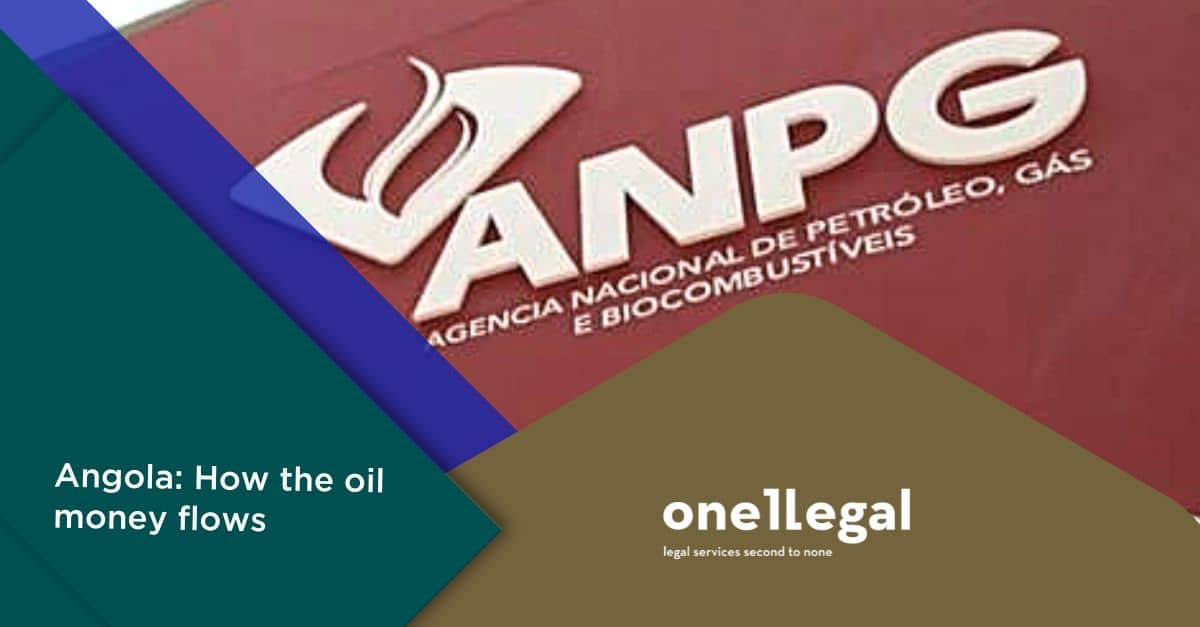16/11/2022
Angola: How the oil money flows

The “Agência Nacional de Petróleo, Gás e Biocombustíveis” (National Petroleum, Gas and Biofuel Agency), ANPG in short, is the Angolan petroleum regulator and “National Concessionaire”. It is also a sort of broker entity which collects the oil revenues that are allocated to the State and pays over such funds to the National Treasury account. As such, ANPG plays a pivotal role in the circulation of oil money and in ensuring the Angolan State receives its share of the oil revenue. How does this process actually work? The response is found in Presidential Decree 289/19, of October 9th, 2019, which lays down the process whereby ANPG collects and transfers the oil revenues to the State, while keeping a slice to itself to cover its running costs. Below is a step-by-step outline of the process:
- Under the existing Production Sharing Contracts with the investor oil companies, ANPG is entitled to a certain portion of the oil produced and to lift and export such oil. For each lifting, ANPG must determine whether such cargo is (A) committed to repay an oil-secured financing obtained by the State (“Committed Cargo”), or (B) is not associated with any financing (“Free Cargo”);
- In case of a Free Cargo, the oil proceeds are deposited in a ANPG dedicated account and thereafter transferred to the National Treasury account. However, ANPG has the right to keep a portion of such proceeds (to be determined on an annual basis by the Angolan government), up to a maximum of 10%, to use for its running costs. This ANPG entitlement is currently (for 2022) set at 5%;
- In case of a Committed Cargo, the process is a bit more complex. After each oil sale, ANPG must inform the Ministry of Finance of the sale amount and generate a credit note for such amount (insofar that the money was automatically used to repay a loan and not received by ANPG). This credit must be paid to ANPG (until the end of the following month) out of the surplus balance of the respective escrow account(s) which was/were created to secure/collateralize the oil loan(s);
- If the said accounts do not have sufficient funds to pay ANPG, then the ANPG credit remains “open” until the accounts have surplus funds and/or a new Free Cargo is available so ANPG can be repaid;
- At the end of each calendar year, a final-year reconciliation of the ANPG/MinFin “current account” balance must be produced to determine the amount of the ANPG credit (if any) which is rolled over to the following year.
One (very) important aspect of this mechanism is that the ANPG revenues are not based on actual oil sales but rather on an oil reference price which is established annually by the Angolan government. However, in case the market oil price is lower than the reference price, the lower price (market) will be used so that ANPG will not benefit from any “underestimation” of the oil price by the government. In the opposite scenario (market price higher than reference price), the reference price will prevail.
In brief, this is how the oil money circulates in the veins of ANPG and the State.





